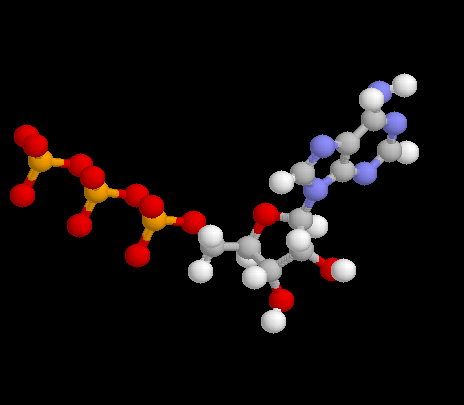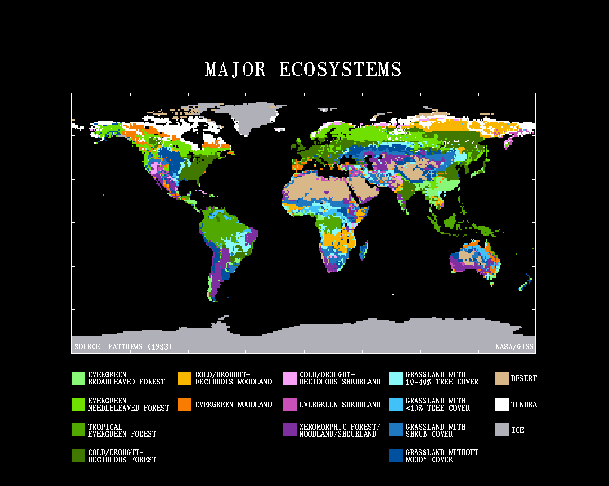G. Tyler Miller
Chapter 5: Evolution & Biodiversity
Origins, Niches, and Adaptation
![]()
How are the Earth's resilient and systemic qualities a product of life?
The complexity of ecosystems can be seen from two perspectives: one today and the other over the long-term which we call "deep-time."
- now–The Tangled Bank
- then–Evolutionary variation and descent from a common ancestor
These perspectives are complementary and we need both to understand how special the Earth really is. The goldilock's hypothesis says that the Earth is neither too hot, nor too cold, so it is "just right" for life. But what maintains this optimal range of temperature, oxygen, and stability amidst seasonal variation? The Sun has been getting warmer,over the lifetime of its fusion engine, so how is the Earth still a temperate place?
What we see today as energy flow that moves trace elements and nutrients through ever more diverse assemblages of life, depends on what came before the present ecological arrangement. Just holding on to the nitrogen, carbon, hydrogen and oxygen so that they may continue to nourish life is a difficult feat; one provided by the mass of the planet, its median distance from the sun and the pull of its moon on the sea surface and landscape.
Miller argues that "Organisms convert solar energy to food, chemicals cycle, and a variety of species with different biological roles (niches) have evolved in response to changing environmental conditions."
p. 92
The "long chain of evolution" represented today by all the animals and plants we see surrounding us, and the unseen bacteria, fungi and viruses amount to an irreplaceable gift. Robert Frost in a metaphor, "the gift outright" could easily have been referring to the evolution of life on earth.
The twin visions Miller is asking you to develop are like bifocal glasses: close-up is ecology and far into the background is evolution. One eye alone lacks the depth perception for us to see the dimensions of cycles, the length of time it takes for ecological systems to retain essential nutrients, and the breadth of biological diversity that "holds the world steady" based on Wilson's essay. We are the children of these twin processes. One is evolution --occurring over 3.7 billion years of life on Earth-- also referred to as descent with variation. The other process involves the capture and transfer of materials, called nutrient recycling based on transformation of energy.
Without the energy and nutrients which created us and for which we must labor with due care if we are all to survive we would not sustain our basic needs. Although there are three of many basic laws of ecological science, one law-like concept embraces all of these natural laws:
Nourish the Earth, or perish.
Lets see why that is, how we can act responsibly and what we are doing.
Select a section of the Miller book, chapter five that describes niches as concepts for adaptive natural places and explain what that means in terms of an ecosystem.
Now select a diagram on pages 97 or 98 and explain what the width of the bell curve represents and how that best expresses visually what you think the term niche represents:
What does the passage before and after the terms "adaptations" and "adaptive traits" mean?
What do the key words "specialist" and "generalist" mean with respect to species we have read about?
What does Miller mean by “what limits adaptation” and “biodiversity"
as an example of what particular "ecosystem services”?
What do we mean by the statement "life has transformed the Earth?"
How are these concepts of evolution, biological diversity, adaptation and speciation related to the complexity found in these stories?
• Wilson’s Storm
• Myer’s Giant Forest Powerhouse
• Leopold’s Wolfless Mountains
• Dillard’s Weasels, predation & freedom
• Colinvaux’s niche as Miller’s “place to live”?
Nature of Ecology, and Evolution to present characteristics of life
Connections
The spheres of rock, air, water, life or WEAL
Atmosphere as a sink
- Biomes
- as biotic and abiotic fusion of elements
- biodiversity
Niches and Food Webs or the web of life are not strictly the same:
- energy flow in ecosystems
- pyramid of numbers and the ecological tithe (figure 420)
These together create: Niches
Fundamental niche
1. fundamental niche -- what an organism does for a living
2. habitat niche -- where an organism acquires its life support (address)
Realized niche
3. multidimensional niche -- capacity of organisms to capture, convert and store energy, nutrients and capital to pass on to the:
3.1 community
3.2 offspring
The bottom line in evolution and ecology for all life is the concept of Net Primary Productivity of ecosystems
- gross primary productivity versus net primary productivity
- 15 types of ecosystems are exploited in two ways:
- generalists
- specialists
Fitness is not the measure of success for an organism or a population in matter cycling and materials moving through ecological systems. Fitness is merely a gage of reproductive success.
Many factors from environmental change, to heritable traits, survival ability and isolation of reproductive populations account for what particular species survive and how speciation occurs among remote populations.
Review this from last week's material from Chapter 4:
Hydrocycle-- moves water and nutrients through ecosystems, like a conveyor belt. (Round River) [H + O]
Carbon cycle-- mover the building blocks of life from the air, to the soil, to the oceans and to the rocks in a never ending but very variable cycle of birth, growth, death and decay. [CO, CO2, CH4, or CaCO3]
What determines the functional integrity of the two systems above for nourishing life, sustaining species and affording opportunities for speciation is the movement of those elements in lesser concentrations. These are called:
Trace elements
Nitrogen, paradoxically abundant in the air, but unavailable for life due to its scarcity in soil or food.
- Necessary for chromosomes
- necessary for heritable traits to be passed on
Phosphorus, the power for any life to live is derived from the making of phosphate bonds and the release of energy when those bonds are broken.
 ATP, or Adenosine
tri-phosphate is the "gasoline" of the cells and the motive
ingredient in ecosystems.
ATP, or Adenosine
tri-phosphate is the "gasoline" of the cells and the motive
ingredient in ecosystems.
and
Sulfur is the food and fuel of the anaerobic zone. The element plays a crucial role in the capacity of enzymes and chains of amino acids that form enzymes to fold properly. Unless proteins can fold properly the enzymes and hormones that proteins become, do not function properly.
Nutrients are the building blocks of ecosystems
Ecosystem services require that these nutrients (above) and trace elements of iron, calcium, iodine, magnesium, and sodium be present in sufficient amounts and in optimal quantities for producers, consumers and decomposers to all sustain predators and prey alike. Plants, bacteria, fungi and animals all contribute to the services ecosystems provide for humans.
It is estimated that every year the ecological life support systems of the planet -- we call it natural systems-- contribute the equivalent of $33-trillion to the global economy.
This money is largely unaccounted for, Except Dr. Repetto and his colleagues tried to estimate what it would cost to reproduce wetlands, forests, estuaries and soil. They came up with the thirty three trillion figure.
Systems analysis -- requires seeing the whole picture with two eyes and bifocals. Two eyes give depth perception and bifocals reveal the near view of ecosystems and the far view of evolutionary speciation.
Systemic qualities -- refer to those natural products such as oxygen, shade, clean water, or nutritious food and ample fuel seen together as the combined products of optimally functioning ecological communities which possess what we call ecological integrity.

All environments possess systemic qualities. And these mixture of qualities based on functions and roles are significant because they are composed of the many details that explain how life, in Wilson's terms, holds the world steady by making the planet a more hospitable place to live for ever more species and ever greater populations of each species.
September 11, 2005